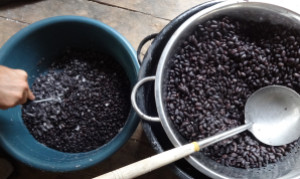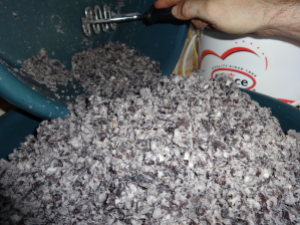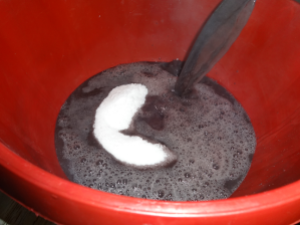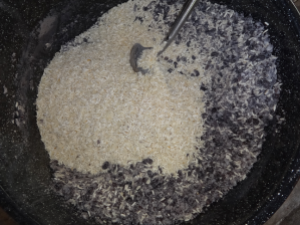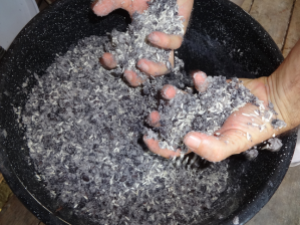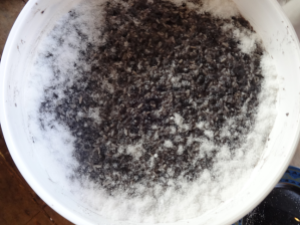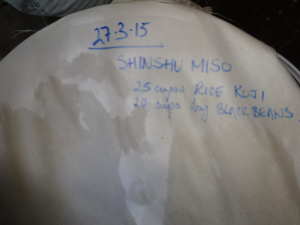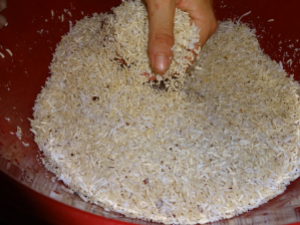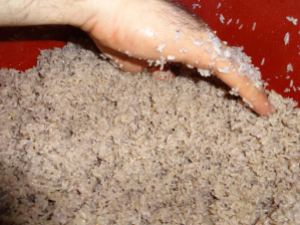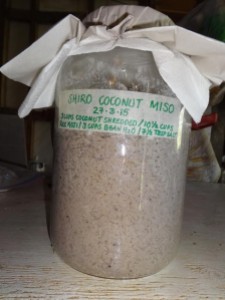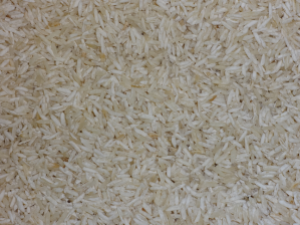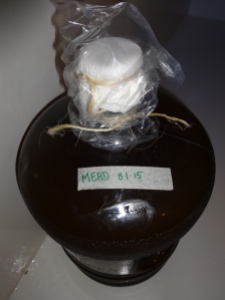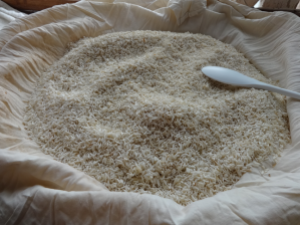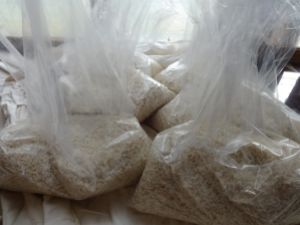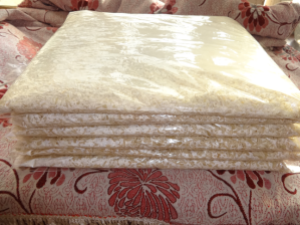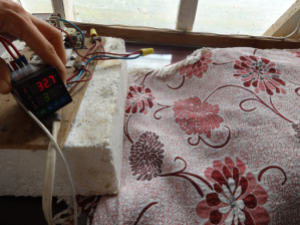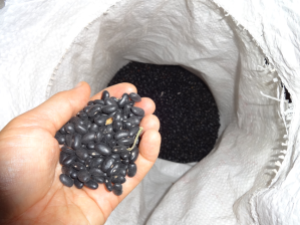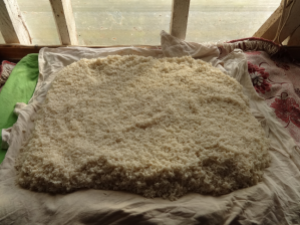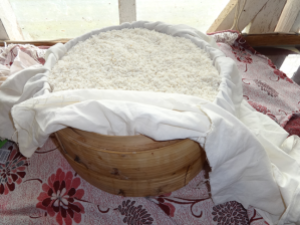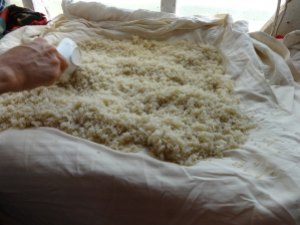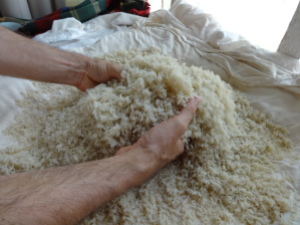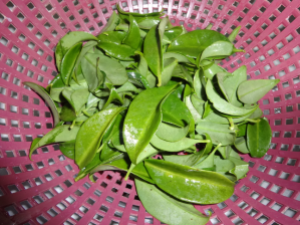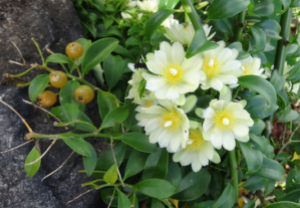 Today started off with grey skies and heavy rains hence, we were at a bit of a loss on the farm. So, we came up with a great idea to go into town, on a whim, to buy some fry-jacks for breakfast. For those of you who are not familiar with this Belizean breakfast fare, it is half or quarter circular shaped piece of flat dough which is deep-fried in cooking oil. It has a lot of baking soda in it to make it puff up as it cooks; some people preferentially place a slit in the dough so that it deflates after it poofs up. It is usually served in the morning with re-fried beans, pork, beef or chicken. We bought the fry-jacks as a take-out so that we could take them home to Munchkinise them…that’s what I do best!! It was actually quite funny because I had not bought fry-jacks for ten years and so I was still working with old prices. When I walked into the eating place, I asked, “can I have a dollar fry-jacks, please?” The lady gave me a bewildered look at said that there was no such thing as a dala fry-jack and a portion cost $2.50. Oh my, we do sometimes live in a time warp because we don’t keep current with eating out prices.
Today started off with grey skies and heavy rains hence, we were at a bit of a loss on the farm. So, we came up with a great idea to go into town, on a whim, to buy some fry-jacks for breakfast. For those of you who are not familiar with this Belizean breakfast fare, it is half or quarter circular shaped piece of flat dough which is deep-fried in cooking oil. It has a lot of baking soda in it to make it puff up as it cooks; some people preferentially place a slit in the dough so that it deflates after it poofs up. It is usually served in the morning with re-fried beans, pork, beef or chicken. We bought the fry-jacks as a take-out so that we could take them home to Munchkinise them…that’s what I do best!! It was actually quite funny because I had not bought fry-jacks for ten years and so I was still working with old prices. When I walked into the eating place, I asked, “can I have a dollar fry-jacks, please?” The lady gave me a bewildered look at said that there was no such thing as a dala fry-jack and a portion cost $2.50. Oh my, we do sometimes live in a time warp because we don’t keep current with eating out prices.
Back home, I stuck the fry-jacks in the oven, on low heat, to keep them warm. And, then I made:
Munchkin’s Miso Dip
1 tbsp miso
2 tbsp honey
6 bird chilli peppers, chopped finely (optional)
Mix all ingredients together and use as a dip.
This miso dipping sauce is not just for fry-jacks. It is also great for french fries, corn tortillas and all manner of snacky foods. If you want to a bit healthier, carrot or celery sticks will also do the trick. The dip is sweet and savoury at the same time with a definite umami quality; the hot chilli adds a kick to it!
We had a lovely breakfast:
(picture missing)
Can you believe it!!! The picture was corrupted and could not be down-loaded! We only realised it after pigging out on all the fry-jacks!
As a consolation, here is another picture of us eating:
You know what this means…we are going to have another fry-jack day so that we can get a picture. When I told Gnome, he had no objections to repeating the binge again.
I do not actually have a recipe for fry-jacks because I have tried a couple of Internet recipes which don’t seem to have the correct ingredient portions. I think that the regular person on the street who knows how to cook fry-jacks does not Blog! One day, I will get it right and if I do, I will surely post up the recipe for all you fried-dough fans!















